Caught between the River Clyde and the notorious Gorbals neighbourhood, Glasgow College’s new Riverside Campus attempts to engage with both as part of a new wave of regeneration across the city
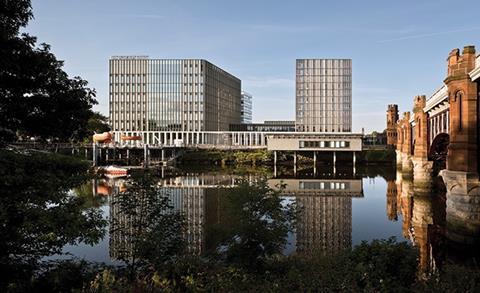
When it comes to delivering urban regeneration, there are default development sectors that spring to mind as reliable drivers of renewal. Housing is probably chief among them, followed by commercial redevelopment and, perhaps, retail and leisure. In the two decades since the introduction of the National Lottery, culturally led regeneration has also been an emergent phenomenon, spearheaded by landmark projects such as London’s Bankside redevelopment and Gateshead Waterfront opposite Newcastle.
But one sector that has not traditionally been viewed as a natural trigger for regeneration is education. Of course, school and college buildings regularly form part of wider regeneration masterplans and are increasingly designed as focal buildings with a high degree of architectural quality.
Just two examples are the Ravensbourne College in Greenwich Peninsula by Foreign Office Architects, and Feilden Clegg Bradley’s multiple commissions for Manchester Metropolitan University. But in all these instances the colleges are either already part of an established campus or are subsidiary components within a much broader residential or commercially led masterplan.
The new Riverside Campus of the City of Glasgow College is neither, however. Instead it forms a relatively rare example of an educational building taking a leading, unilateral role in delivering wholesale regeneration in a chronically deprived part of the city. The building’s substantial efforts in this regard have not gone unnoticed. Opened last year, the project was built by contractor Sir Robert McAlpine and designed as a collaboration between Edinburgh-based architects Michael Laird and Reiach and Hall. The campus has been nominated for the ��ɫ����TV Magazine Project of the Year in this year’s ��ɫ����TV Awards and has also been shortlisted for the 2016 RIBA Stirling prize. But its innate regeneration instincts remain as noteworthy and intriguing as its architectural qualities.

Moreover, the college fits neatly into two emerging patterns of regeneration that are spreading across Glasgow: the regeneration of Glasgow’s River Clyde and the increasing involvement of the further education sector in the regeneration of deprived parts of the city. Both ambitions give the building national resonance and offer an alluring insight into the renewed confidence and commitment with which the education sector is engaging in urban as well as academic improvement.
Clyde
It is no exaggeration to claim that the City of Glasgow College’s new Riverside Campus is located in one of the most socially and economically challenging parts of the city. Its northern front faces Glasgow’s famous River Clyde. And to its south lies the notorious Gorbals district, which, even before the terrifying tower blocks of the 1960s, was frequently referred to as the “worst slum in Europe”.
Now at least the first of these positions should be considered an advantage. But for a variety of historical and cultural reasons, Glasgow still maintains a difficult, if much improved, relationship with its river. In the 19th century and first half of the 20th century the relationship was easy enough – the Clyde was Scotland’s industrial engine room, supporting a vast shipping and ship-building industry.
But when this industry started to decline sharply from the 1960s onwards, it left an appalling wave of deprivation and dilapidation in its wake. In sociological terms, the effect was even more damaging. Because the Clyde had been an industrial artery, stripped of its utilitarian role it was rendered meaningless because the city simply couldn’t fathom what other sort of role it could possibly have. Glasgow simply turned its back on the river.
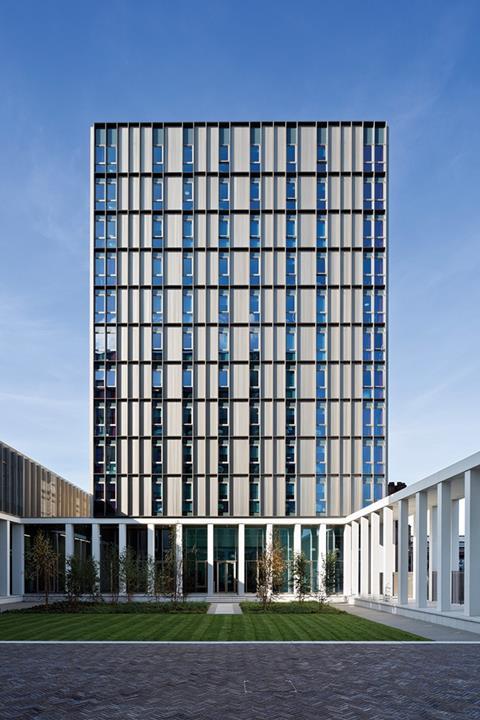
This process was not unique to Glasgow and happened in scores of other deindustrialised western European cities from the 1960s. It is the reason why Denys Lasdun placed the National Theatre’s service yard facing the Thames when designing it in the early 1970s. It is also why today the Clyde has no continuous riverside walkway and why scores of developments from the 1960s to the 1990s, including the horrendous Glasgow Sheriff Court beside the new college, maintain virtually no relationship with it.
Over the past 20 years, however, much has been done to reverse the situation and dozens of new landmark buildings, such as the Hydro and Clyde Auditorium by Foster and Partners, Zaha Hadid’s Riverside Transport Museum, and Pacific Quay, which includes Chipperfield’s BBC Scotland HQ, have sought to deliver regeneration by celebrating their relationship with the river. This has been a multi-million pound mandate extended by the construction of multiple riverside venues for the 2014 Commonwealth Games, including the Athlete’s village and 3DReid’s velodrome at the Emirates Arena.
But even within this new generation of river-friendly buildings there are variations. While the Transport Museum unfurls a momentous glazed facade towards the Clyde, its entrance is pointedly at the other end of the building. In civic terms, BBC Scotland is a dumb glass box that sits in the middle of a pointless and underused quay and it is difficult to take the Emirates Arena’s urbanistic altruism seriously when it is surmounted by what essentially amounts to an immense car spoiler.
New relationships
As Angus Wilson, technical director at Reiach and Hall explains, these are the kind of mistakes that the design team was determined to avoid at the Riverside Campus. “We all saw this building as a regeneration project from the start. It was central to the design. We wanted to give the building a real civic presence and give a face not just to the college but the city too. A big part of this is the totally inclusive way the campus faces the river.”
The campus comprises three connected blocks: teaching, the halls of residence and the workshop. All are arranged in an angular horseshoe formation with a courtyard at the centre that opens out to the river. A continuous colonnade links the blocks and encloses the courtyard, separating it from the adjacent riverside walkway.
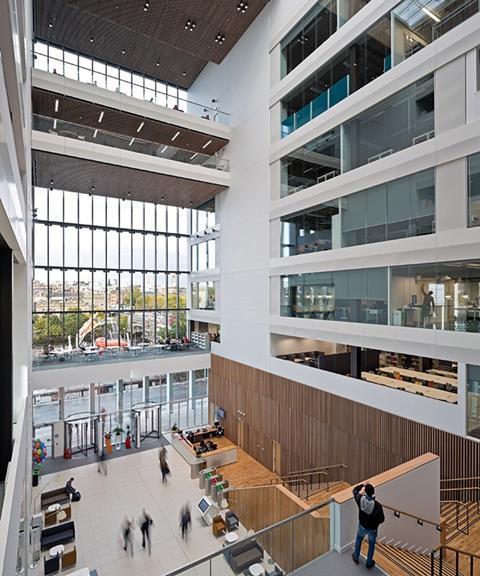
“This separation was necessary for security purposes,” says Adam Frickleton, associate director at Michael Laird Architects. “The residential nature of the halls, plus the fact that some of the college students are as young as 16, meant that it couldn’t be an entirely open space, but the colonnade still permits views through.”
Colonnades are indeed excellent devices for permitting both views and enclosure and they achieve both here. Crucially, even though they prohibit public access to the courtyard beyond, they animate the previously blank riverside walkway and offer it a new, legible civic presence, essentially the same civic trade-off as London’s private Georgian squares. The colonnades therefore are essential to enriching the relationship between college and river and are the backbone of the college’s realisation of regeneration.
But it is not just the river the new college attempts to forge a new relationship with but the Gorbals behind it too. Much good work has been done in the Gorbals over the past two decades, unemployment has dropped by one-third, swathes of the area have been redeveloped and many, though not all, of its hellish tower blocks and dystopian housing estates, have been torn down to much local merriment.
But the Gorbals still exhibits a host of social and economic problems. Levels of crime and anti-social behaviour remain high, life expectancy remains below Glaswegian and Scottish averages, and its position as one of the poorest areas in the UK persists. Clearly, there is a limit to what a single building can ever do to abate such woes, but, as Frickleton explains, the college tries a number of architectural remedies.
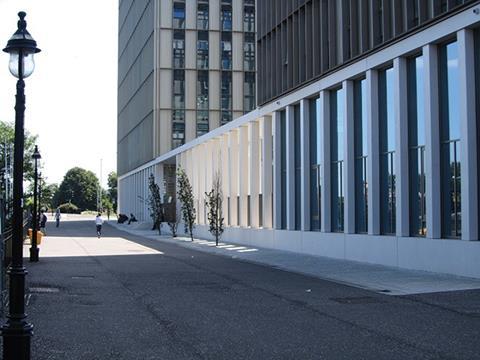
“The college is a cube in plan, but even with it directly addressing the river, we were careful not to give it a hierarchy of front and back. So it really is four equally important sides, with entrances on all of them and one side embracing the river but another engaging with the street.”
In fairness it is not yet possible to judge the success of the street engagement because the final phase of the scheme is yet to be completed.
In the meantime, a new public park area to the rear of the building will attempt to act a soft and subtle transitional zone between the educational campus and the primarily residential neighbourhood. Engaging with the Gorbals will undoubtedly prove a more taxing exercise than engaging with the river. But its success or otherwise will be central to the strength of the college’s regeneration legacy.
Education in the city
The development of the Riverside Campus is matched by its emerging sister scheme in the city centre. This is known as the City Campus and has also been designed by the same joint architectural team that delivered Riverside. However, the City campus, which opens this month, is conceived on a far grander scale and is more than four times the size of Riverside.
The huge scale of these developments, which will provide almost 1,000 classrooms across both sites, presents a broader perspective from which the regeneration role and responsibilities of the college can be brought more sharply into focus.
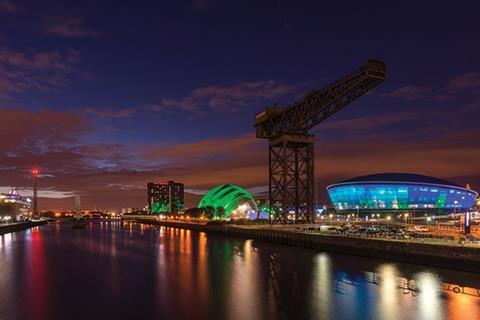
For City of Glasgow College principal and CEO Paul Little, the answer requires a subtle reformatting of the question. “It’s not a question of the regeneration role of the finished building” he counters. “It’s a question of the process you use to create that building and ensure that it’s embedded in the local community right from the start of the design process.”
Little explains that this can be accomplished in a number of ways. “First, you don’t outsource the design. You make sure that wherever possible you engage with local schools, stakeholders and residents to make sure that they’re fully involved in the design process.
This empowers the local community and connects the building to the city.”
Such a proposition might be considered particularly challenging with the Gorbals being on the college’s doorstep but Little insists that community outreach and apprentice schemes during the construction of the Riverside Campus created the kinds of links he has identified.
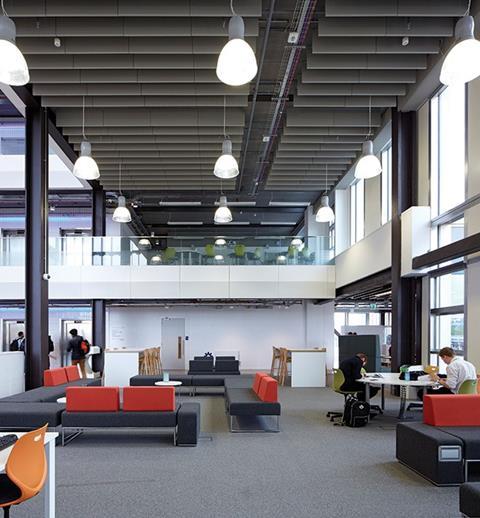
Little also cites the type of education being offered at the college as a symptom of regeneration. “What’s offered inside is as important as what the building looks like outside. The college attempts to address inequality by appealing to the disadvantaged by not charging fees, providing bursaries and offering our own degree accreditations. These are the kind of opportunities that create a sense of vision and ambition in the community that connects the college to the city and has the real potential to change the lives forever. That’s the kind of regeneration education can deliver.”
Project Team
Architect Michael Laird Architects and Reiach and Hall Architects
Client City of Glasgow College
Structural engineer Arup
M&E consultant FES with Hulley & Kirkwood
Quantity surveyor SRM/Sweett Group
Landscape architect Rankinfraser Landscape Architecture
Main contractor Sir Robert McAlpine


























No comments yet